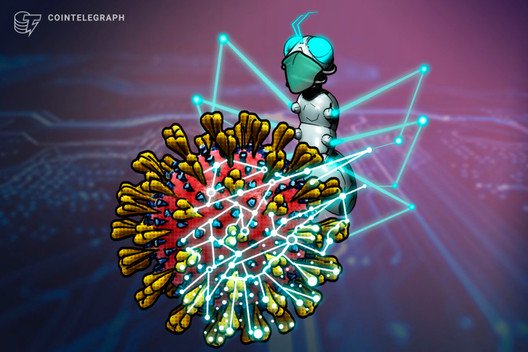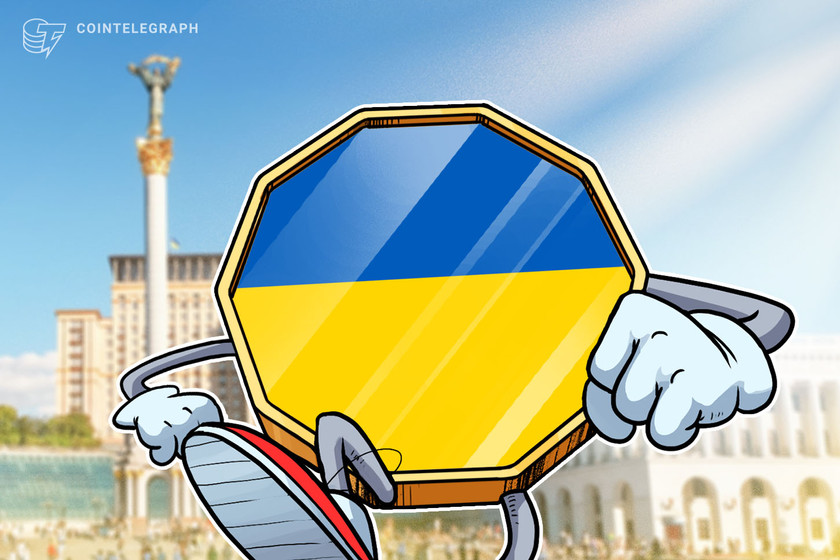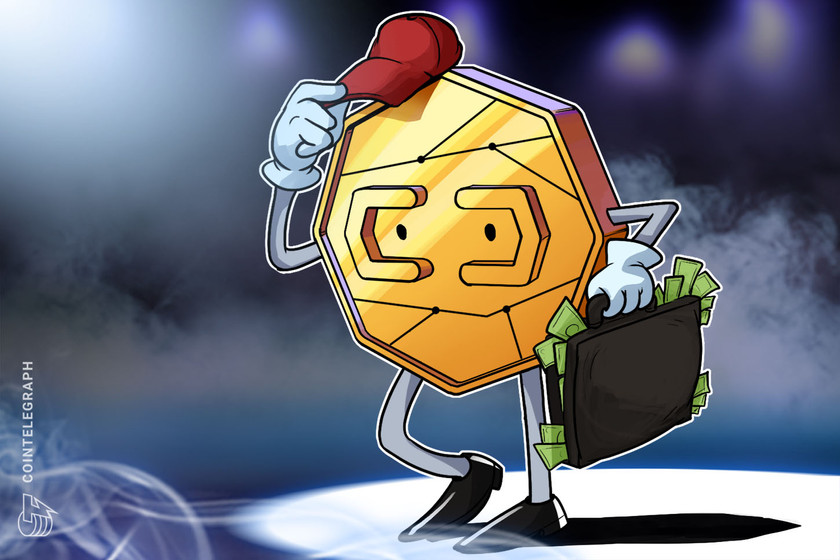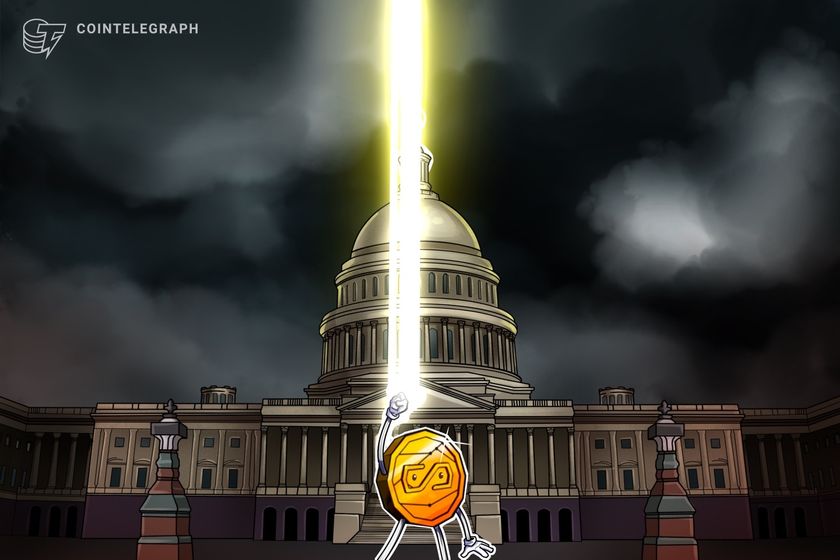Altcoin Roundup: 3 blockchain protocols taking the supply chain crisis head-on
The world of blockchain technology has undergone a significant transformation over the past decade as the concept evolved from offering a simple means of exchange between two parties to a sprawling ecosystem full of protocols with real-world applications ranging from decentralized finance to one-of-a-kind digital art.
One sector of the market that has been gaining traction as of late while the global just-in-time delivery system has fallen under immense pressure is the supply chain and logistics group of projects that offer blockchain-based solutions for the global supply chain ecosystem.
While it’s true that the current problems facing global suppliers, shippers, truckers and businesses are multifaceted and include issues such as worker pay and benefits, the integration of blockchain technology offers a substantial upgrade to the current system, which often relies on tracking physical paperwork between siloed parts of the multinational network.
Here’s a look at some of the top supply chain- and logistics-focused blockchain protocols and how they are contributing toward solving the current challenges facing the global system.
OriginTrail
OriginTrail is a protocol focused on offering logistical support and enterprise solutions to the global community by transforming the current ecosystem of siloed information on Web 2.0 into an integrated “knowledge graph” on Web 3.0.
In an effort to better convey its goals to the wider public, OriginTrail underwent a rebrand on Oct. 1 to become the “world’s first decentralized knowledge graph,” which is designed to “organize humanity’s most important assets, making them discoverable, verifiable and valuable.”
As part of the network’s efforts to be able to track assets of all types across all networks, OriginTrail has adopted a multi-chain approach to facilitate interoperability and is currently running on Ethereum, xDai and Polygon, and it is in the process of integrating with Polkadot.
The long-term goals of the protocol include expansion beyond the physical supply chain in order to make it possible to organize, discover and verify all manner of items, including art, diplomas, certificates, nonfungible tokens and decentralized finance assets.
Most recently, the project got a stamp of approval of sorts, as its TRAC token was listed on Coinbase, the top United States-based cryptocurrency exchange, which helped boost its value to a new record high at $3.87.

As supply chain struggles continue, protocols like OriginTrail have the potential to help streamline the process while also providing all parties along the chain with up-to-date data on port backlogs and other pertinent information that can help them make a better-informed decision on the best way to route their cargo.
VeChain
VeChain is a dual-token blockchain-powered supply chain platform that utilizes Internet of Things (IoT) technology and distributed governance to solve issues with supply chain management.

The network’s proof-of-authority (PoA) mechanism, which incorporates larger authority masternode operators whose identities are verified by the VeChain Foundation, helps to maintain the overall network security and ensure the protocol runs according to the Foundations governance policy.
VeChain recently announced that PoA 2.0 will be released on its testnet on Nov. 5 and is scheduled to go live on the mainnet on Nov. 16.
According to the team, PoA 2.0 combines the Byzantine Fault Tolerance and Nakamoto consensus mechanisms to offer a more secure system as well as improvements to the randomness process that selects the next block producer and the inclusion of a committee feature that randomly selects three block producers to verify a block.
The VeChain protocol works closely with DNV, the globally recognized expert in assurance and risk management, as part of its overall strategy to integrate blockchain technology with the global supply chain.
The two organizations recently met with the heads of state in San Marino to present results and reconfirm their commitment to helping the country manage its transition from being a linear economy to a circular economy through the integration of blockchain applications.
VeChain has also been recognized by the government of China for its developments in food traceability and application of blockchain in technology in industrial agriculture and rural development.
Related: EU central banks working on DLT-based asset settlement
Morpheus Network
The Morpheus Network is a supply chain software-as-a-service middleware platform that is designed to integrate with legacy supply chain technology and emerging technologies, including blockchain, IoT and RFID in order to provide supply chain managers with a digital footprint for the items they are tracking in a safe and secure environment.
The protocol recently underwent a rebrand and token swap from its old MRPH token to the new MNW token in an effort to improve the smart contract capabilities of the token and increase its security and level of efficiency. Following the announcement of the token swap on Oct. 19, the price of MNW rallied to a new record high of $5.19 on Nov. 3.

One of the features included in the new smart contract is the ability for programs stored on the blockchain to execute automatically when the terms and conditions agreed upon by the involved parties are met.
This enables a new level of automation to the process and allows for instantaneous settlement while also eliminating third-party intermediaries that slow the process and take a cut of the action.
Efforts made by the team at Morpheus have not gone unnoticed, as the project has recently received several awards including the 2021 ISCEA PTAK Award for Supply Chain Excellence at the SCTECH2021, as well as being chosen by Gulftainer, a leading privately held global port operator, as the blockchain winner of its “Future of Ports” competition.
The overarching stated goal of the Morpheus Network is to utilize its global network of partners to help companies and government organizations “remove barriers to optimize and automate their global supply chain operations.”
While blockchain technology might be unable to solve all the issues currently plaguing the global supply chain system, contributions from projects like OriginTrail, VeChain and Morpheus Network hold the promise of helping to simplify and streamline the process over time while cutting out intermediaries and making the industry more environmentally friendly and sustainable.
Want more information about trading and investing in crypto markets?
- Supply chain woes and the growth of Web 3.0 back OriginTrail’s fresh ATH
- San Marino approves VeChain eNFT vaccination certificate that’s verifiable worldwide
- Private, public and consortium blockchains: The differences explained
- VeChain Thor mainnet reaches 10 million blocks milestone with no downtime
- Parabolic gains for OriginTrail, Maker and XYO Network rouse ‘altseason’ hopes
The views and opinions expressed here are solely those of the author and do not necessarily reflect the views of Cointelegraph.com. Every investment and trading move involves risk, you should conduct your own research when making a decision.









